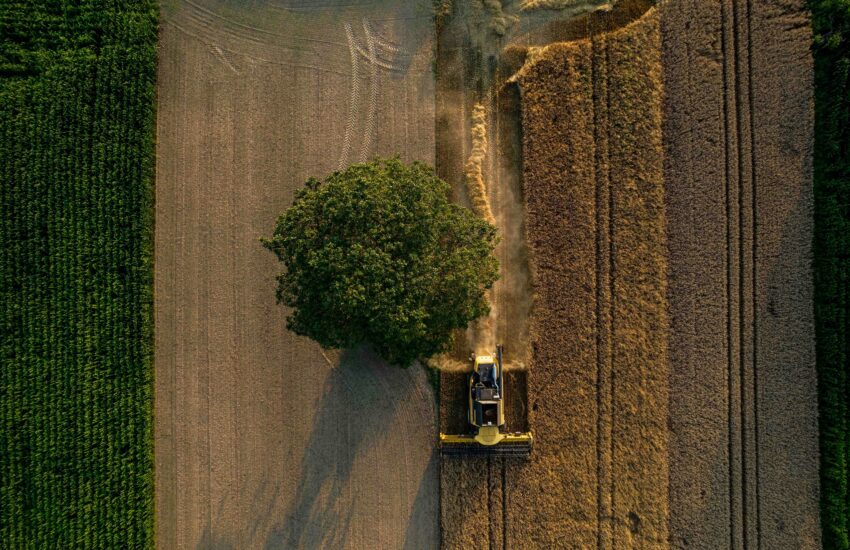Roots of Renewal: Why Agroforestry is the Future of Climate-Resilient Agriculture
- Home
- Roots of Renewal: Why Agroforestry is the Future of Climate-Resilient Agriculture

Roots of Renewal: Why Agroforestry is the
Across rural landscapes, farmers are facing the harsh realities of climate change—unpredictable rainfall, depleted soils, fragile ecosystems, and falling crop yields. Traditional farming systems that once sustained generations are now struggling under the pressure of monocropping, chemical inputs, and deforestation. For smallholder farmers at the bottom of the pyramid, these challenges trap communities in cycles of poverty while undermining the ecological foundations of their livelihoods.
But there is a brighter, more resilient path forward, agroforestry. By integrating trees into farming systems, agroforestry restores landscapes, supports biodiversity, and strengthens community resilience. At the heart of the GREAT Initiative, it represents a model of regeneration that delivers prosperity while healing the planet.
Why Conventional Agriculture Falls Short
Over the past decades, food production has been dominated by extractive farming methods: tilling land year after year, planting single crops, and relying heavily on fertilizers and pesticides. While this has often boosted yields in the short term, the long-term effects are severe:
- Soils stripped of fertility and organic matter.
- Greater vulnerability to droughts and floods.
- Heavy dependence on costly chemical inputs.
- Widespread deforestation as farmland expands into forests.
This system leaves farmers in a precarious position facing higher costs, lower returns, and greater risks from climate shocks. It also accelerates ecological decline, pushing communities further into vulnerability.
Agroforestry: Farming in Partnership with Nature
Agroforestry offers a different paradigm. Instead of separating agriculture and forests, it brings them together—integrating trees, shrubs, crops, and even livestock into a single productive system. This approach mimics the way natural ecosystems work, providing resilience and balance while still producing food and income.
The benefits of agroforestry are far-reaching:
- Healthier Soils: Trees fix nitrogen, prevent erosion, and return organic matter to the ground, enriching fertility.
- Increased Productivity: Diverse crops and tree products—fruits, nuts, timber create multiple streams of income.
- Water Security: Roots improve groundwater recharge, while tree cover reduces evaporation and protects against drought.
- Climate Resilience: Trees provide shade, buffer against extreme weather, and create microclimates that support farming stability.
- Carbon Sequestration: Agroforestry systems capture and store significant amounts of carbon, linking farmers directly with the growing global carbon market.
- Biodiversity Protection: Instead of pushing ecosystems to collapse, agroforestry promotes a thriving mosaic where farming and nature coexist.
Agroforestry and the GREAT Model
The GREAT Initiative places agroforestry at the center of its just transition model. We believe that when farmers are equipped with regenerative tools, access to clean energy, and pathways into carbon finance, they can transform both their economies and ecosystems.
Through agroforestry projects, farmers restore biodiversity, secure food systems, and build resilience while generating carbon credits. These credits are sold in global markets, channeling finance back to local households. Unlike traditional aid models, the GREAT approach ensures that prosperity stems from regeneration and that revenues flow directly to communities rather than distant institutions.
Women and Youth as Agroforestry Leaders
Agroforestry is not only about the environment, it is also about social transformation. Women, often responsible for fuel and household food, benefit as agroforestry reduces dependence on firewood, improves food security, and creates new business opportunities through diversified harvests. When freed from hours of resource collection, women can invest time in education, enterprises, and community leadership.
Youth, meanwhile, gain meaningful work opportunities in tree nurseries, soil improvement projects, and the monitoring of carbon credit systems. Instead of leaving rural areas for unstable jobs in cities, young people can become green entrepreneurs driving climate solutions from within their own communities.
By making women and youth central to governance and implementation, agroforestry fosters both intergenerational collaboration and equity.
Linking Agroforestry with Carbon Finance
One of the most powerful aspects of agroforestry under the GREAT Initiative is its link to carbon markets. Every tree planted and every hectare restored contributes measurable reductions in carbon emissions. These results are certified into carbon credits, creating an ongoing stream of income for farmers.
For too long, communities regenerating land have been excluded from climate finance. Agroforestry flips that dynamic, ensuring farmers are compensated for the ecosystem services they provide—sequestering carbon, improving biodiversity, and enhancing resilience. In doing so, the most climate-vulnerable communities step into the heart of a trillion-dollar global economy.
A Vision of Renewal
Imagine degraded farmlands transformed into mosaics of food crops and tree cover, where birds have returned, soils are alive again, and water flows with resilience. Envision farmers who once struggled to survive now earning steady incomes from diversified harvests and carbon credits. Picture communities where women’s leadership shapes inclusive governance and youth bring energy and innovation into local prosperity.
This is not a distant dream, it is the reality already unfolding through agroforestry projects led by the GREAT Initiative. With more than 1.2 million farmers already on board, the potential to scale this model across continents is immense.
Conclusion
The future of agriculture depends on approaches that regenerate rather than deplete. Agroforestry is more than planting trees on farmland—it is about renewing rural economies, reviving ecosystems, and redefining prosperity for the most vulnerable.By investing in roots of renewal, we invest in a future where communities and ecosystems flourish together.



